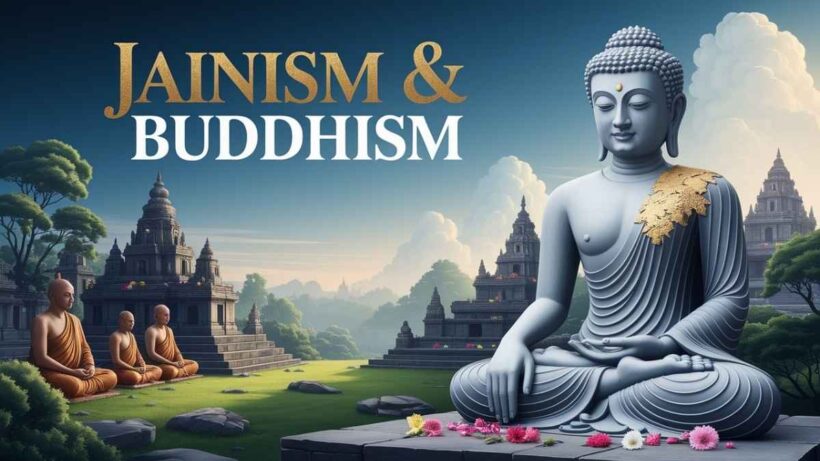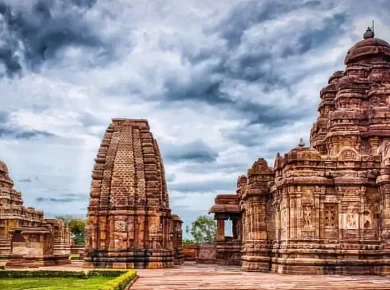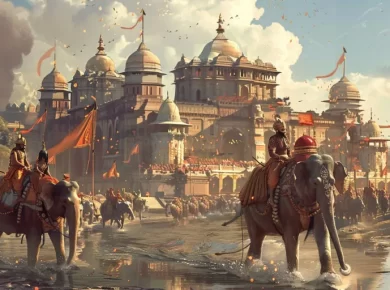Jainism & Buddhism – Cause of Origin
Ritualistic Dominion of Brahamanas
- Kshatriya reacted strongly against the ritualistic dominion of brahamanas & vernas based on birth.
- Verdhaman Mahavira & Gautama Buddha both belonged to Kshatriya clan & disputed the authority of brahamanas.
Also read: Jainism and Buddhism
Rise of new Agriculture Economy
- Real reason was rise of new agriculture economy in north India which was based on iron ploughshare.
- Required the use of bullocks & cattles & could not flourish without animal husbandry.
- But Vedic practices of killing cattles in sacrifice led to decimation of cattle wealth, against which both Jainism & Buddhism spoke & propagated the idea of ahimsa.
Punch Marked Coins
Earliest coins belonged to 500 BC & are known as punch marked coins, 1st used by Vaishyas / Traders. Use of punch marked coins facilitated trade & commerce, which added to importance of Vaishyas as such.
Vaishyas were ranked 3rd in verna system & were eager to improve their position, hence extended generous support to Buddhism & Jainism along with the following reasons:
- Both were not biased towards any verna system
- Both Preached the gospel of non-violence, which would put an end to the war b/w kingdoms & consequently will promote trade & commerce
- Brahmanical law book “Dharamsutras” decried lending money on interest & a person who live on interest were not held in esteem by them, hence they were eager to improve their position.
New Way of life
A strong reaction by common people against use of coins, private properties, new dwellings, new dresses, new system of transport & luxury; Hence common people yearned to go back to primitive ways of life hence supported Buddhism & Jainism which
- preferred simple, Puritan & ascetic living & asked people to forgo all good things in life
- were not allowed to touch gold & silver & were to accept as much to keep their body & soul together.
20 Points – Causes of Origin of Jainism & Buddhism
-
Reaction against Vedic Ritualism – Both religions emerged as a protest against the complex and expensive rituals of Brahmanism.
-
Opposition to Caste System – They rejected the rigid caste hierarchy and promoted equality.
-
Desire for Simpler Spiritual Path – Common people sought easier, more personal paths to salvation.
-
Rise of Urban Centers – Growth of cities encouraged new ideas, questioning old traditions.
-
Economic Changes – Merchants and artisans supported these religions as they promoted non-violence and equality.
-
Overemphasis on Sacrifices – Criticism of animal sacrifices in Vedic religion promoted non-violence (Ahimsa).
-
No Need for Priestly Mediation – Both religions offered direct access to spiritual practice, without Brahmin intermediaries.
-
Spread of Literacy – Use of Pali and Prakrit (vernacular languages) made teachings accessible to the masses.
-
Political Support – Kings like Bimbisara and Ashoka supported Buddhism, aiding its spread.
-
Moral and Ethical Focus – Emphasis on right conduct, compassion, and inner discipline attracted followers.
-
Spiritual Dissatisfaction – Many were disillusioned with ritualistic religion and sought inner peace.
-
Charismatic Leaders – The teachings and lives of Mahavira and Gautama Buddha inspired many.
-
Ascetic Traditions – Continuation of earlier Shramana (ascetic) movements contributed to their rise.
-
Universal Appeal – Teachings were open to all, regardless of caste or gender.
-
Critique of Materialism – Both philosophies advocated detachment from material desires.
-
Philosophical Depth – Offered profound insights into life, suffering, and liberation.
-
Ethical Revolution – Promoted a new moral code based on non-violence, truth, and self-control.
-
Social Reforms – Condemned social evils like caste discrimination and encouraged compassion.
-
Emphasis on Meditation – Focused on self-realization and mental discipline.
-
Decline of Vedic Relevance – Growing irrelevance of old Vedic practices in changing social conditions.
For more updates, explore the IR & Security Category. Feel free to share your thoughts and comments
If you’re passionate about building a successful blogging website, check out this helpful guide at Coding Tag – How to Start a Successful Blog. It offers practical steps and expert tips to kickstart your blogging journey!











